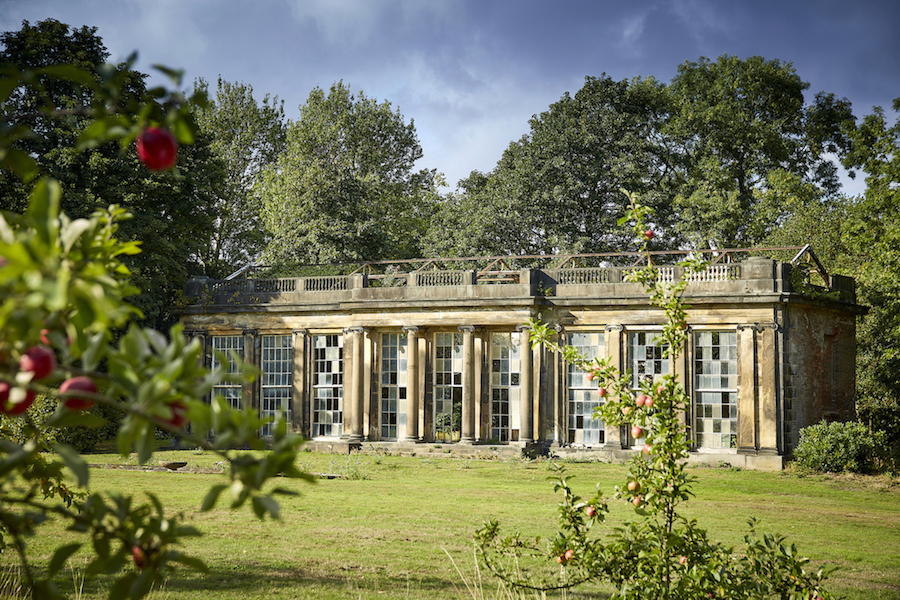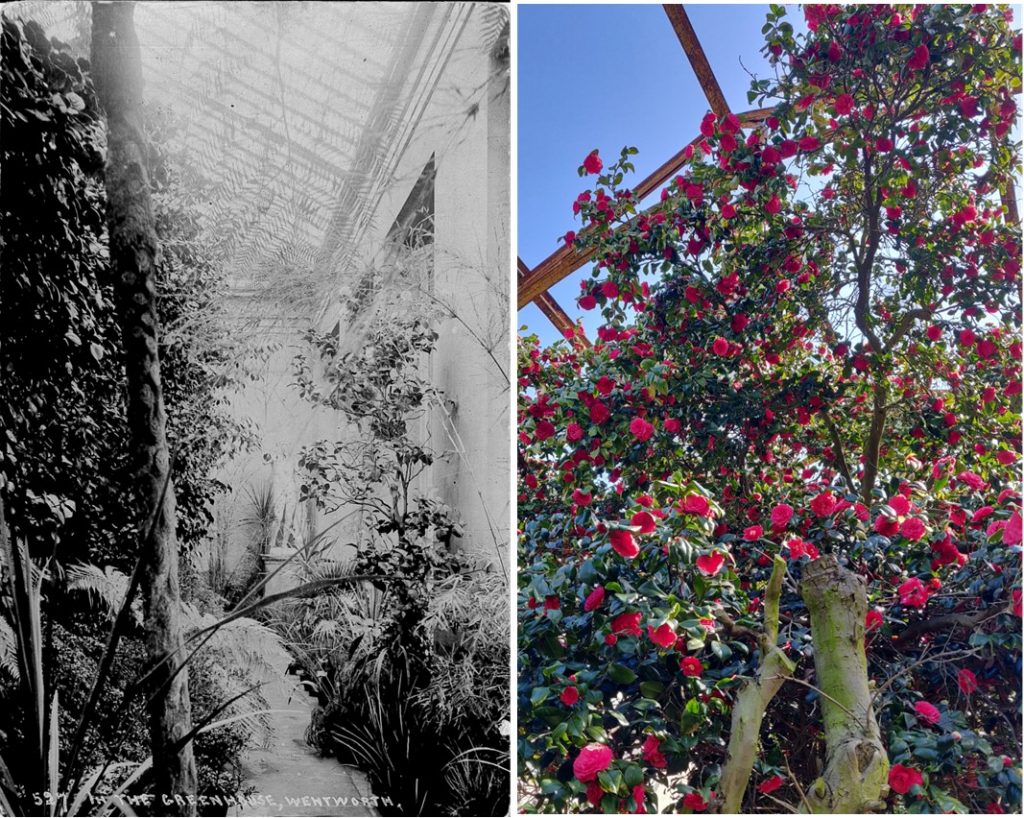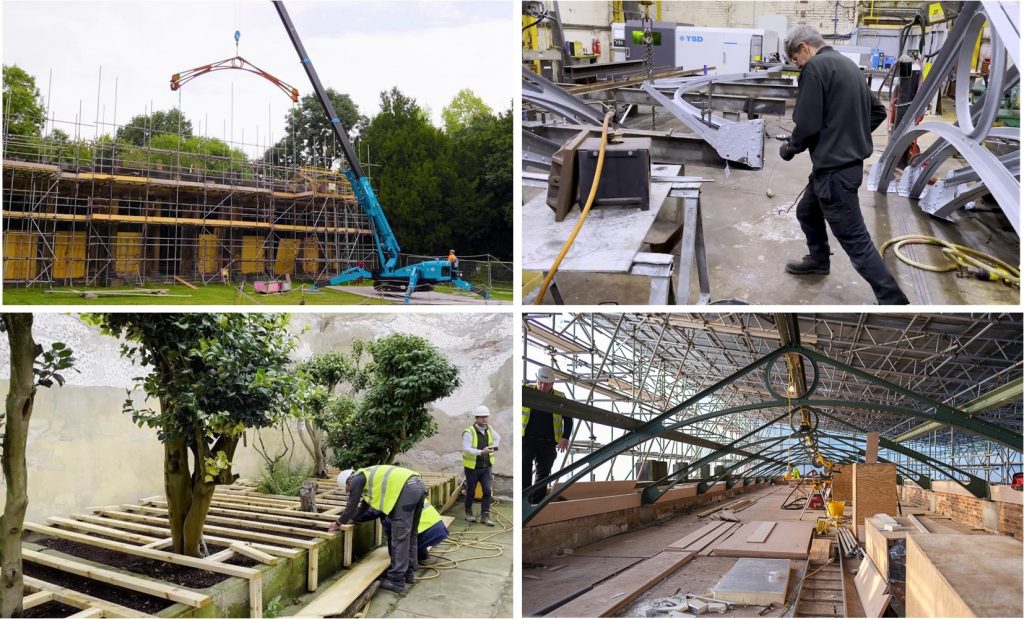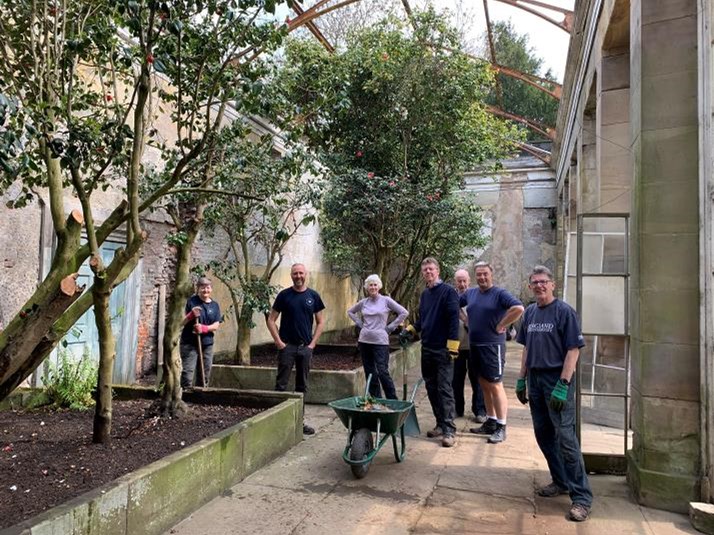They say that, just as with tea, the strength of something is only drawn out in hot water. And nothing truer could be said for the 200-year-old camellias at Wentworth Woodhouse.
These ancient plants dating back to the 1820s have bloomed in adversity while the walls of the Camellia House have crumbled around them.
But the camellias are set to take centre stage again thanks to the meticulous management of the gardening volunteers at Wentworth Woodhouse Preservation Trust – and a painstaking £5 million restoration of their historic home.

This summer, the Trust will open the doors of a new teahouse in the Georgian Camellia House for visitors to take tea in the grounds of Wentworth Woodhouse. A tea menu will embrace tea-drinking ceremonies and cultures from across the globe, with a host of tea-themed community events and project also planned around the building’s history.
Parts of the Camellia House date back to 1730 when Lady Rockingham had a teahouse built overlooking her husband’s menagerie of exotic animals in which to entertain her female guests and show off her prized tea caddy. No kitchen these days would be without a canister of teabags, but back then it was a rare commodity that signalled wealth and would have been kept under lock and key by the lady of the house.
Similarly, camellias were prestigious plants reserved only for the wealthy in Georgian Britain. The glass-fronted part of the Camellia House was built in 1812 to show off the 2nd Marquess of Rockingham’s camellia collection he’d imported from the Far East via the East India Co.

The camellia genus has many species, including Camellia sinensis the plant from which tea is made. So it is fitting that it was ships plying the company’s tea trade that brought the plants back to Britain.
Hailing from warmer climates, it was once widely believed that camellias were too delicate to be grown outside without protection of a glass roof. But those at Wentworth Woodhouse have defied those thoughts. After the Fitzwilliams vacated the mansion, the Camellia House became ruinous and was severely impacted by the open cast mining happening close by.
When the Trust took over the mansion and grounds in 2017, the roofless Grade II* Listed Camellia House was on the Heritage At Risk Register. However, open to the Yorkshire elements, the long-forgotten camellias had flourished.
After clearing away the brambles that had enveloped the building, head gardener, Scott Jamieson, discovered what he dubbed the horticultural equivalent of finding a library of first edition books. Their rarity and age were confirmed with the help of the International Camellia Society and Chiswick House in London, which has its own internationally renowned collection of camellias from the early 1800s.
Many of the 19 plants at Wentworth Woodhouse have been identified as dating back to the 1820s-30s, making them some of the oldest in the western world.

The Trust had a vision to bring the Camellia House back into the visitor attraction through its gargantuan masterplan. Structural work on the Camellia House began in September, with conservation architects, Donald Insall Associates taking on the complex project alongside York-based construction company William Birch & Sons Ltd.
Throughout the ongoing restoration of the Camellia House, the plants have been heavily protected. Timber frames were created to encase the beds which were then covered in plastic sheeting to prevent lime plaster dust contaminating the soil. A crash deck was installed at roof level to prevent debris falling on the plants, with light tunnels to allow natural light to reach the plants.
With the roof having shattered, some of the plants had grown taller than the building. But Scott and the garden volunteers have spent the last five years pruning, feeding, mulching and weeding which has resulted in significant levels of growth lower down on the trunks of the plants. They now look more like shrubs rather than leggy trees.
There have also been cuttings taken from the plants that have been cared for at Chiswick House before being returned to Wentworth Woodhouse as strong healthy plants.
Protecting the camellias has been just one piece of the puzzle. The building had its own issues that the project team have had to contend with. Extensive damage had been caused to the brickwork by rain and invasive weeds. The roof timbers were completely rotten and the cast iron trusses, weighing 200kg each, were unsafe to walk beneath.

These were carefully removed and sent to Hull-based steel fabricators Barker and Patterson to be repaired, shot-blasted and undercoated. They were found to have originally been off-white in colour so have been repainted to mirror this. A new glass and zinc roof was winched onto the trusses in February.
The building, which had no water or electricity supply, was found to be leaning forward 20cms due to subsidence. This meant the surveyors’ drawings had to be within millimetre precision to ensure all restored pieces of the Camellia House would fit back together again.
Every single pane of glass on the nine bays of sash windows had to be drawn to scale. A laser scan of the internal space created a 3D street view style image which helped with the planning of the new-look teahouse. The project management team worked with everyone from ecologists and archaeologists to kitchen designers and plaster specialists to find out how best to plan and devise the space.
A building to service kitchens has been built, along with a Changing Places toilet which will be equipped with hoists and adult changing benches to ensure Wentworth Woodhouse is more accessible for severely disabled people.
During the project, great care has been taken to repair as many existing elements as possible of the Camellia House or replace like-for-like if not. Parts of the surviving wooden panelling, fireplace and original timber roof structure at Lady Rockingham’s teahouse has been repaired and incorporated into the new design. Under the rubble, the teahouse floor was found to have been a black and white diamond pattern, with this also set to be replicated.
Architects’ drawings from 1812 show the Camellia House adorned with statues above a balustraded parapet. The statues have long-since disappeared and there are plans to replace them if additional funding can be found.
Original technologies have also been repurposed for the modern age. The Camellia House was once heated by a coal-fired, underfloor hypocaust system. Now, ground-source heat pumps, which are energy-efficient and have a low environmental impact, will heat the building. Lead pipes and troughs which were used to catch rain for watering the plants have been replaced by modern rainwater-harvesting tanks.

The camellias have survived for decades without a roof, so extra consideration has been made into managing the heat and humidity of the Camellia House. It will be naturally ventilated via the windows and the gardening team have undergone training on how best to manage the environment.
The building’s restoration and repurposing is thanks to a number of grants, including £4m from The National Lottery Heritage Fund, £250,000 from Historic England and £364,622 from The Hamish Ogston Foundation, via Historic England.
Once it opens this summer, the new Camellia House will create up to 22 jobs and double up as an evening events space.






